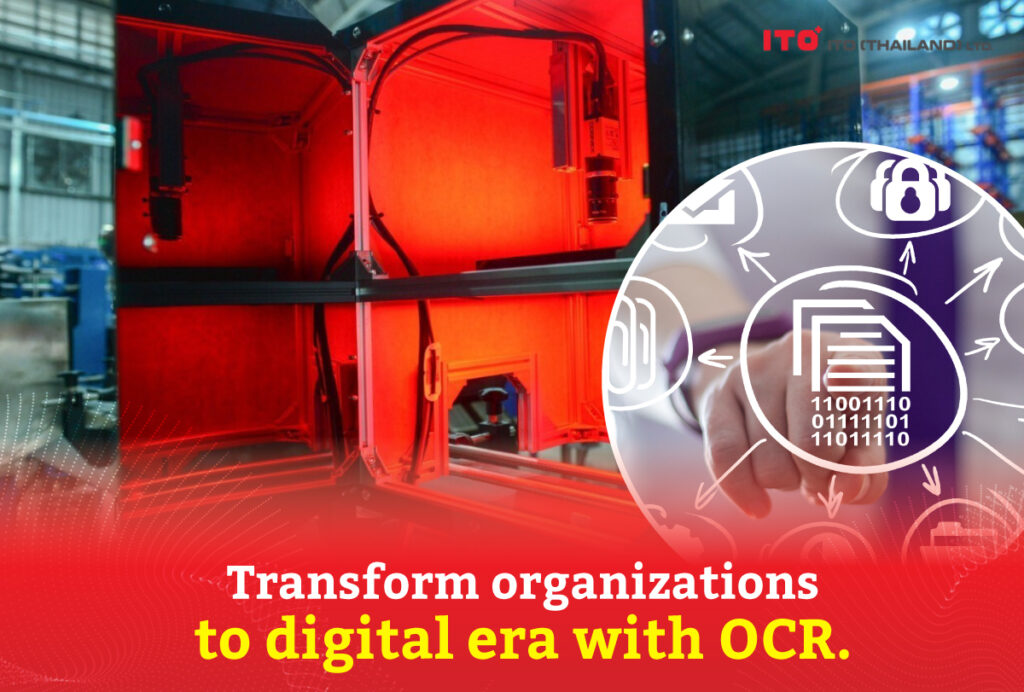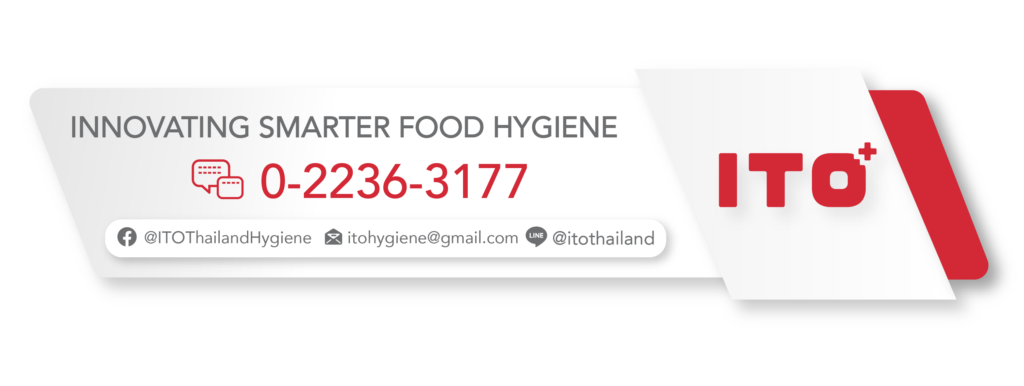ITO Thailand Hygiene Blog
Organizational Transformation into Digital Age by Optical Character Recognition (OCR) Technology
Optical Character Recognition known as OCR technology is a technology used to distinguish the characters from a digital photograph such as a scanned image and printed images on various materials. The system consists of image acquisition hardware, such as camera or scanner, and character detection software.
OCR technology has played a huge role In the food industry because both raw materials and products require to have the details printed on the packaging such as product type, lot number, expiry date, ingredients, origin or other information. Therefore, a technology which can help “reading” the information and store the information in digital form will help facilitating the management and data storage enabling the computer system to automatically make various decisions according to the system that had been defined.
Product inspection
OCR technology plays a significant role in verification of the completeness of printing on packaging; for example, in case of having printing problems and the printhead is damaged or clogged causing the characters to misrepresent the product information, such as incomplete print out due to ink shortage (1), blurred print due to wet surface or static electricity causing a printing error1 or the user touches the printing area while the ink not yet dry (2) or the overprinting due to an error signal, (1) etc., which may result to sending back the products from the destination (especially if the typographical error is related to the information of product expiry). If using humans to check these errors, a lot of labor is required to keep up with the daily produced volume of products and there are chances to get out of sight easily if workers are tired. Currently, OCR technology has been developed for reading the shelf life of food identified by each type of printing such as inkjet1 printing and dot matrix (3) printing.
Apart from the shelf life of the product, allergen identification is another important matter regarding the food standards which require the correct packaging for the product in order to ensure if the product contains or may contain allergens by clearly identifying the type of allergen which OCR technology can play a role at this point to ensure that the product is packaged correctly and the packaging itself has a perfect print quality.
Storage management
In general, storage management will use humans to read food expiry dates and sort the products according to production dates and expiry dates. However, performing such repetitive works has a high risk of making mistakes (4) . Storage management based on OCR in the form of digital storage of food shelf-life information or the use of OCR technology to read codes has helped to enhance the transportation and inventory management to be more efficient due to being able to count the number of products according to the specified codes. Besides, OCR technology helps to sort raw material usage or sell products based on expiry dates resulting to reduce the mismanagement of expired products due to mistakes in handling the sequence of use or sale, as well as, helps to lessen the risk of foodborne diseases caused by eating unsafe food. According to a study of the University of Glasgow (5) on the use of OCR system as a part of data collection for sending to IoT system by experimenting the refrigeration and freezer management using OCR technology to collect the data of food types and expiry dates along with the use of sensors to collect other data, such as temperature, light and humidity, sent to the IoT system for enhancing the efficiency of refrigeration and freezer management such as product expiry alerts, showing items inside the freezer without opening the freezer, etc. In addition, OCR system can also be extended to develop other related facilities such as creating a purchase list of raw materials from the remaining quantity and designing recipes and food menus from the raw materials inside the freezer, etc.
Track & trace and supply chain transparency
For the unique and high-priced products at risk of adulteration; for example, wine (6) of which bottle has its own serial number, OCR technology can be used to track and trace the information of that bottle of wine to ensure the transparency of the supply chain that it is genuine, can be inspected at any time and traceable back to the source. The advantage of using OCR technology is not necessary to make changes to the winemaking system such as labeling QR codes and RFID tags or other additional devices for product tracking. In addition to the serial number, OCR system can also digitally record other information displayed on the bottle such as the type of wine, the place of production, the source of wine, wine ratings, etc.
Customer helper
– Allergen alert
Apart from using in food factories, OCR technology is also developed in the form of a mobile application to assist food allergy patients in reading product labels and screening the potentially harmful products (7) or to assist the children at risk of developing food allergies. (8)
– Receipt data collection
OCR technology is developed to be a part of diet control application for the elderly (9) by using OCR technology to convert the photo of receipt from the store to show a list of food purchased in the application and has a function to record the amount of food eaten, as well as, recommend the appropriate daily calorie intakes.
– Nutrition calculation
Using OCR technology to digitize the information from a photo of nutrition information on product packaging can be extended to develop the application to recommend the daily calorie intakes (10) and the user can record the groups of food and their amount eaten in each day and consider which groups of food to be consumed more or plan how to make a healthy meal plan.
– Halal checker
An application using OCR technology to help screening the food ingredients can be an aid for Islamic consumers to avoid food that does not meet religious requirements; particularly, the ingredients identified in the form of code number,(11) code of food additives, scientific name which may be difficult to read and understand.
If interested in OCR system, please do not hesitate to contact us to get more information and consulting service for development of OCR system for your food industry.
References
1.Koch M. & Doring A. 2011. OCV, O. OCR vs. OCV Monitoring of Printed Product Information. Technical report
2.Liu, X., Xia, M., Xia, N., Tang, S., Yao, A., & Li, W. (2021, March). Detection of characters ink dot defects on the surface of industrial products. In 2021 4th International Conference on Advanced Electronic Materials, Computers and Software Engineering (AEMCSE)(pp. 955-959). IEEE.
3.Muresan, M. P., Szabo, P. A., & Nedevschi, S. (2019, September). Dot Matrix OCR for Bottle Validity Inspection. In 2019 IEEE 15th international conference on intelligent computer communication and processing (ICCP)(pp. 395-401). IEEE.
4.Gong, L., Yu, M., Duan, W., Ye, X., Gudmundsson, K., & Swainson, M. (2018, May). A novel camera based approach for automatic expiry date detection and recognition on food packages. In IFIP International Conference on Artificial Intelligence Applications and Innovations(pp. 133-142). Springer, Cham.
5.Dong, Z., Abdulghani, A. M., Imran, M. A., & Abbasi, Q. H. (2020, April). Artificial Intelligence Enabled Smart Refrigeration Management System Using Internet of Things Framework. In Proceedings of the 2020 International Conference on Computing, Networks and Internet of Things(pp. 65-70).
6.Čakić, S., Popović, T., Šandi, S., Krčo, S., & Gazivoda, A. (2020, February). The use of tesseract ocr number recognition for food tracking and tracing. In 2020 24th International Conference on Information Technology (IT)(pp. 1-4). IEEE.
7.Rohini, B., Pavuluri, D. M., Kumar, L. N., Soorya, V., & Aravinth, J. (2021, March). A Framework to Identify Allergen and Nutrient Content in Fruits and Packaged Food using Deep Learning and OCR. In 2021 7th International Conference on Advanced Computing and Communication Systems (ICACCS)(Vol. 1, pp. 72-77). IEEE.
8.Kamis, N. A. P., & Shin, O. K. (2020). OCR-Based Safety Check System of Packaged Food for Food Inconvenience Patients. 한국디지털콘텐츠학회 논문지, 21(6), 1025-1032.
9.Sainz-De-Abajo, B., García-Alonso, J. M., Berrocal-Olmeda, J. J., Laso-Mangas, S., & De La Torre-Díez, I. (2020). FoodScan: Food Monitoring App by Scanning the Groceries Receipts. IEEE Access, 8, 227915-227924.
10.Nasir, M. A. M., & Othman, N. Z. S. (2018). Food labelling recognition using ocr for mobile application. IUTM Computing Proceedings: Innovations in Computing Technology and Applications, 3, 1263-1267.
11.Fadhilah, H., Djamal, E. C., Ilyas, R., & Najmurrokhman, A. (2018, August). Non-halal ingredients detection of food packaging image using convolutional neural networks. In 2018 International symposium on advanced intelligent informatics (SAIN)(pp. 131-136). IEEE.
Related Post
-

Liquid nitrogen in food industry
You maybe have heard that liquid nitrogen can rapidly freeze the food, haven’t you? And what are its advantages and benefits? Let's get to know the liquid nitrogen in food industry with ITO (Thailand).
-
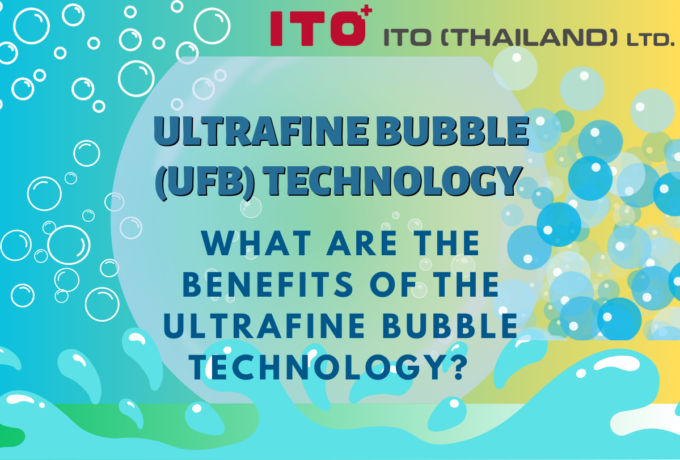
Ultrafine bubble (UFB) technology (Part 2)
The previous content has discussed the benefits of the ultrafine bubble technology in agriculture, livestock, and fisheries, cleaning raw materials and various surfaces. Today, we will continue to learn about the use of the ultrafine bubble technology in food production processes and waste management from the food industry and how to create these tiny gas bubbles.
-
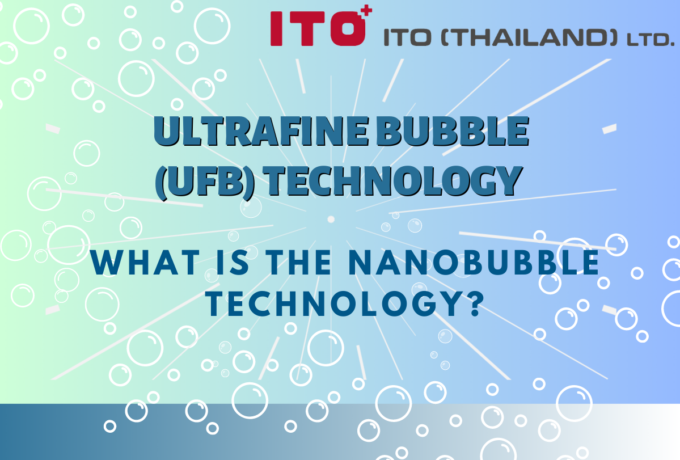
Ultrafine bubble (UFB) technology (Part 1)
Simple bubbles when transformed into the micro-nano level can do more than you think. Let's learn about the technology of these tiny bubbles and their application in the food industry with ITO (Thailand).
-
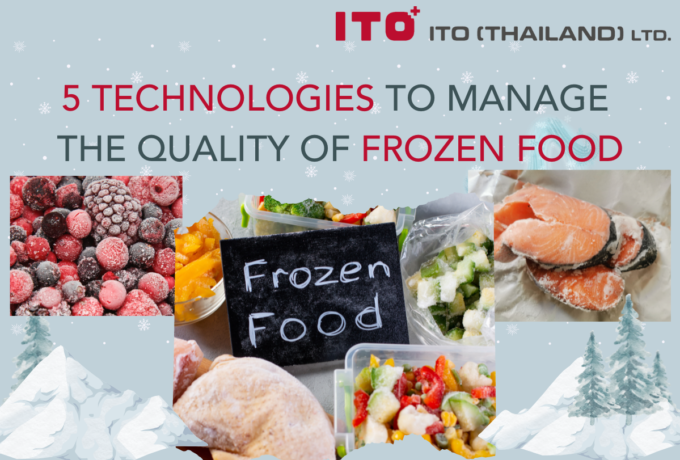
Frozen food storage management
Freezing is a method of food preservation commonly used in food that goes bad quickly such as ready-to-cook fresh food, ready meals, or foods in which nutritional values decay easily, or have substances that are sensitive to temperature, light, oxygen, etc. Freezing uses a principle of quickly solidifying water in the products, making the molecules of the substances unable to react to one another, thus the foods last longer. It also suppresses the growth of microorganisms and kills parasites. For instance, USFDA suggested controlling parasites in fish consumed raw such as sushi and sashimi by freezing the fish at the minimum of 20 degrees Celsius for 7 days or stored at -35 degrees Celsius for 15 hours to control parasites in fish (conditions may depend on the size of the fish as well).
-
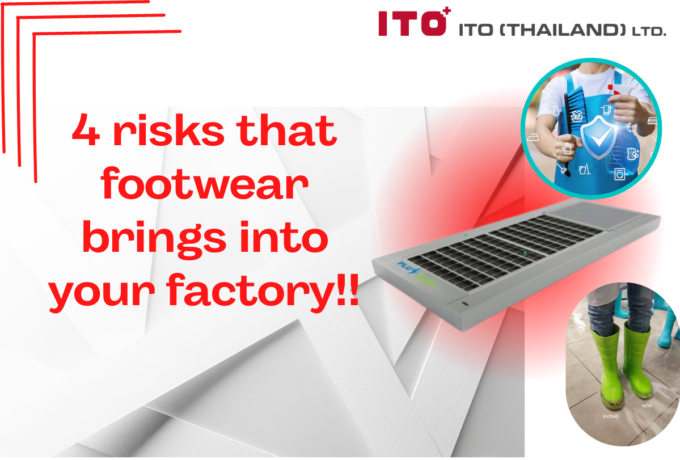
Boot Cleaner
Pay attention to the hygiene of the footwear for good hygiene in the food industry
-
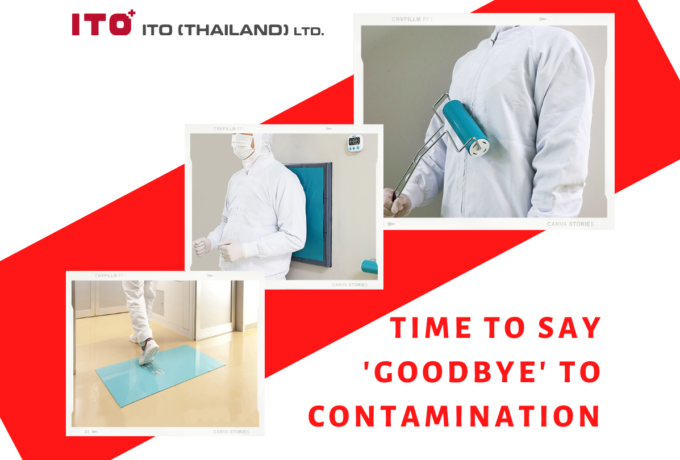
Innovation for sustainable physical contamination prevention
It is known that external impurities pose a food safety risk. One of the main channels of contamination is the presence of humans as a carrier of dust and dirt into the production or high-risk areas, causing dirt, germs, or foreign matters to contaminate food and harm consumers.








